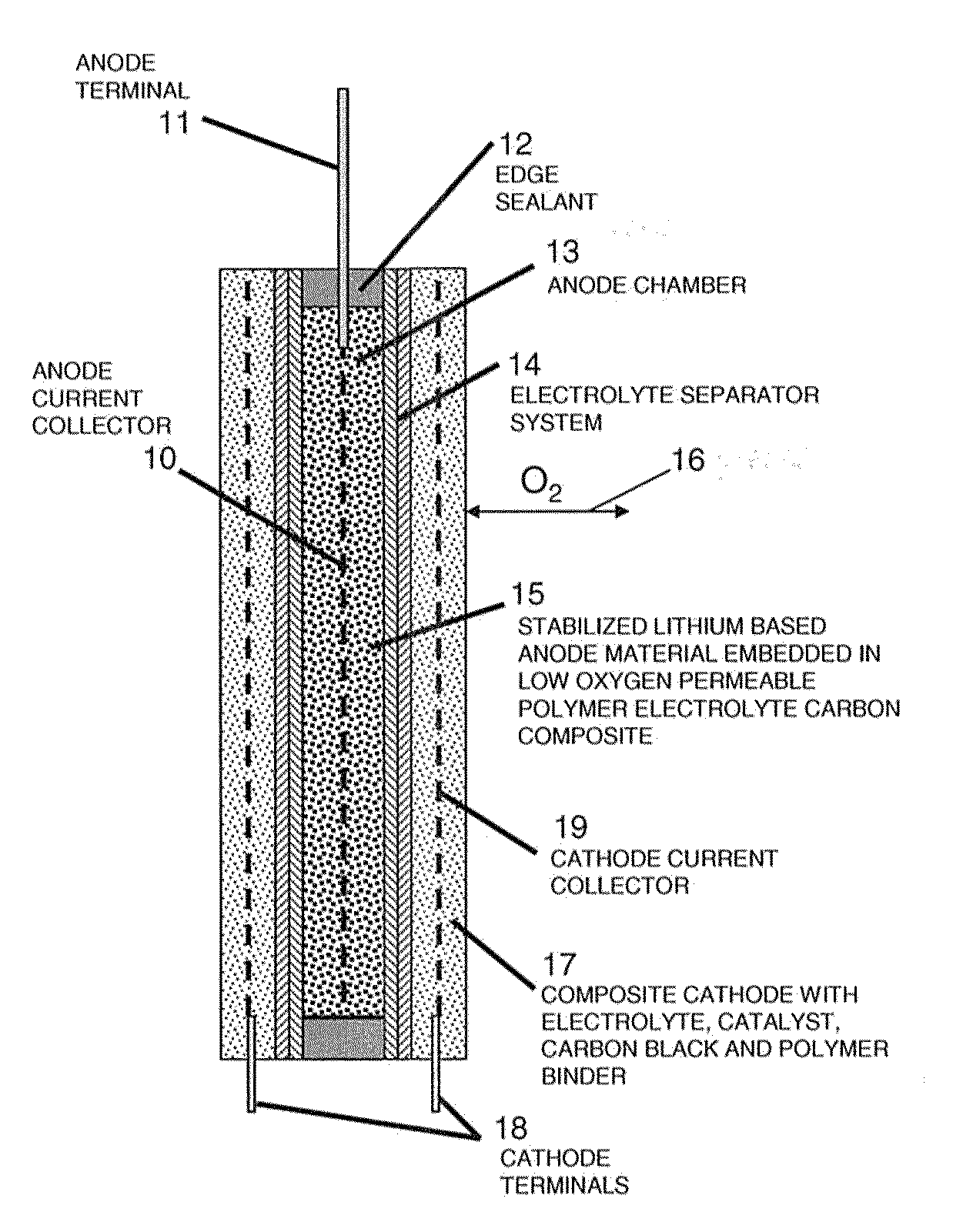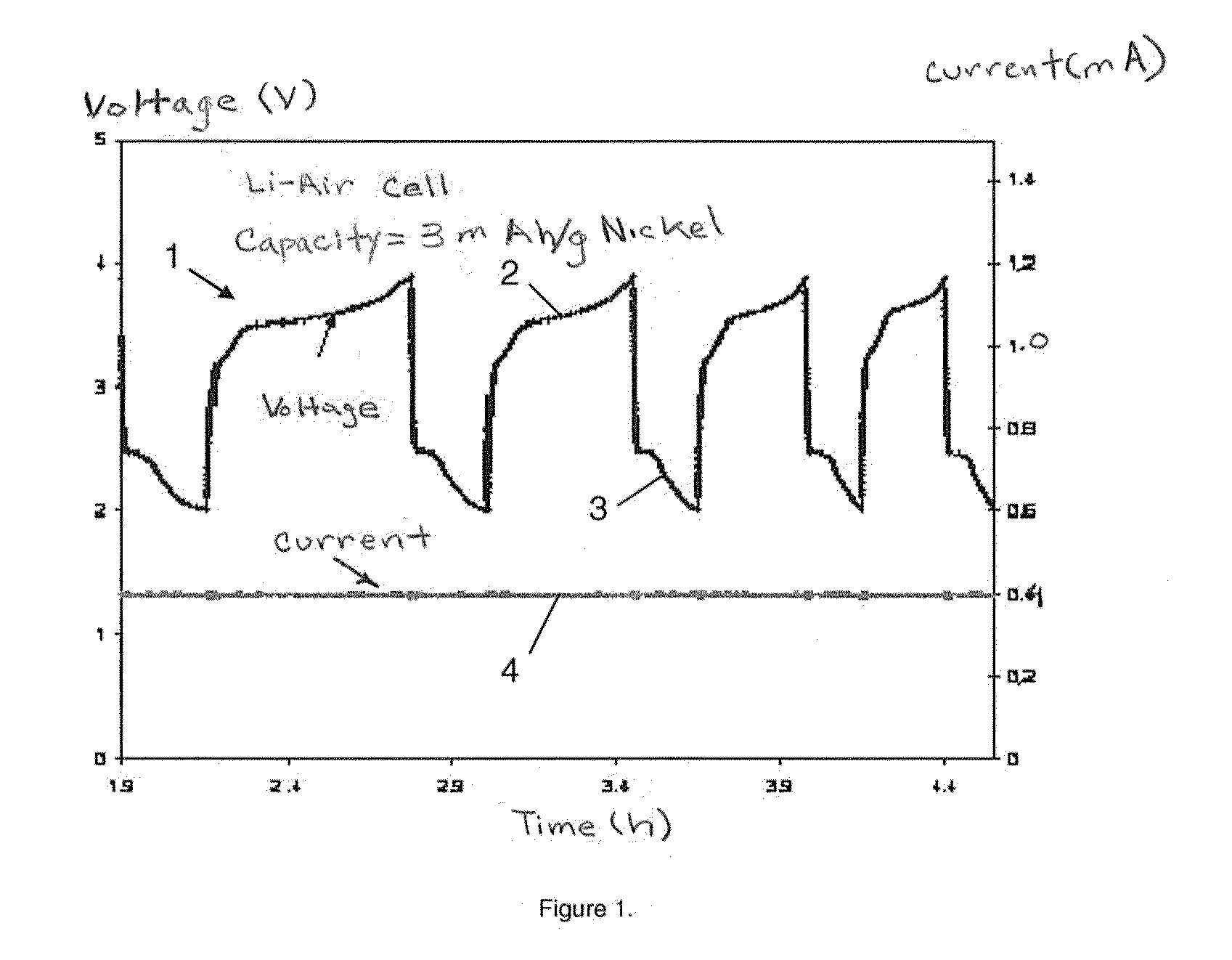Lithium Oxygen Battery Having Enhanced Anode Environment
a lithium oxygen battery and anode environment technology, applied in the field of batteries, can solve the problems of increasing the impedance of the cell, complicated recharge process, internal short circuits within the cell, etc., and achieve the effect of enhancing the anode environment and reducing the effects of oxygen
- Summary
- Abstract
- Description
- Claims
- Application Information
AI Technical Summary
Benefits of technology
Problems solved by technology
Method used
Image
Examples
example of
Production of Lithium-Ion-Air Cell (Lithium-Affinity Anode)
[0061]Referring to FIG. 11, a Lithium Ion Air Cell having a low oxygen permeable anode / separator structure may be formed by first constructing a porous separator. Separator 401 slurry is formed by mixing PMMA micro spheres and sodium carboxmethyl cellulose in water. Fillers such ceramic powder (i.e. aluminum oxide nano-powder or fumed silica) may also be included in the slurry to improve the structural rigidity of the final film. The slurry is cast onto a non stick surface 402 an allowed to dry. The resulting separator film 403 is next calendared using a laminator 404 at 120° C. to obtain a dense smooth film. The film is then rinsed in acetone 405 to dissolve out the PMMA and yield a porous separator. Alternatively, a commercially available porous separator such as that manufactured by Celgard corporation may be employed.
[0062]Next an anode is constructed using anode mixture 501 that includes Silicon Powder as an active anod...
PUM
| Property | Measurement | Unit |
|---|---|---|
| thicknesses | aaaaa | aaaaa |
| diameter | aaaaa | aaaaa |
| oxygen permeability | aaaaa | aaaaa |
Abstract
Description
Claims
Application Information
 Login to View More
Login to View More - R&D
- Intellectual Property
- Life Sciences
- Materials
- Tech Scout
- Unparalleled Data Quality
- Higher Quality Content
- 60% Fewer Hallucinations
Browse by: Latest US Patents, China's latest patents, Technical Efficacy Thesaurus, Application Domain, Technology Topic, Popular Technical Reports.
© 2025 PatSnap. All rights reserved.Legal|Privacy policy|Modern Slavery Act Transparency Statement|Sitemap|About US| Contact US: help@patsnap.com



